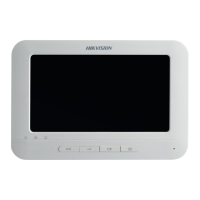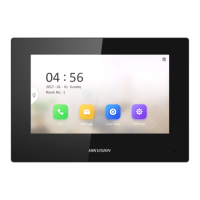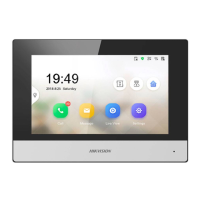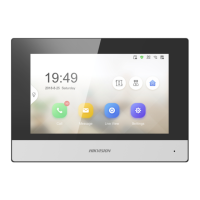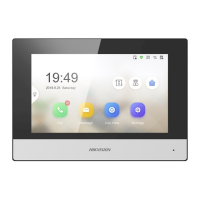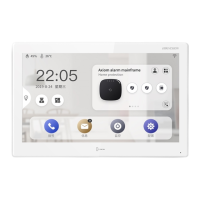Do you have a question about the HIKVISION DS-KH6210(L) and is the answer not in the manual?
| Model | DS-KH6210(L) |
|---|---|
| Category | Intercom System |
| Display Resolution | 1024 x 600 |
| Operation Method | Touch screen |
| Audio Input | Built-in microphone |
| Audio Output | Built-in speaker |
| Power Supply | DC 12V |
| Working Humidity | 10% to 90% (non-condensing) |
| Operating System | Embedded Linux |
| Display Screen | 7-inch color display |
| Communication | TCP/IP |
| Network Interface | Ethernet |
| USB Interface | 1 USB port |
| Working Temperature | -10 °C to 55 °C |
| Video Input | 1 channel |
| Video Output | 1 channel |
Details FCC compliance requirements and operational conditions for the device.
Explains CE marking and compliance with EU directives like WEEE and RoHS.
Critical safety warnings to prevent serious injury or death from improper use or installation.
Important precautions to prevent potential injury or equipment damage.
Step-by-step guide for physically mounting the indoor station onto a wall.
Instructions for securely mounting the indoor station using a wall gang box.
Explains how to connect the internal wiring for various indoor station models.
Specific wiring diagrams and terminal descriptions for multiple indoor station models.
Wiring instructions and diagrams for the DS-KH6310-W and DS-KH6310 models.
Wiring details and diagrams for the DS-KH6310-W(L) and DS-KH6210(L) models.
Process for activating and configuring online indoor stations via the setup tool.
Instructions for activating devices remotely using the batch configuration software.
Guide on how to modify network settings like IP address for multiple devices.
Various methods for adding devices to the batch configuration software.
Overview of how to remotely manage and configure device settings.
Step-by-step guide for activating the device directly through its interface.
Accessing and configuring various device settings like passwords, sound, and zones.
Procedures for changing admin, duress, unlock, and arm/disarm passwords.
Setting up different arming modes for security zones.
Configuring alarm zone types, alarm modes, and delay times.
Performing system maintenance like TF card formatting and rebooting.
